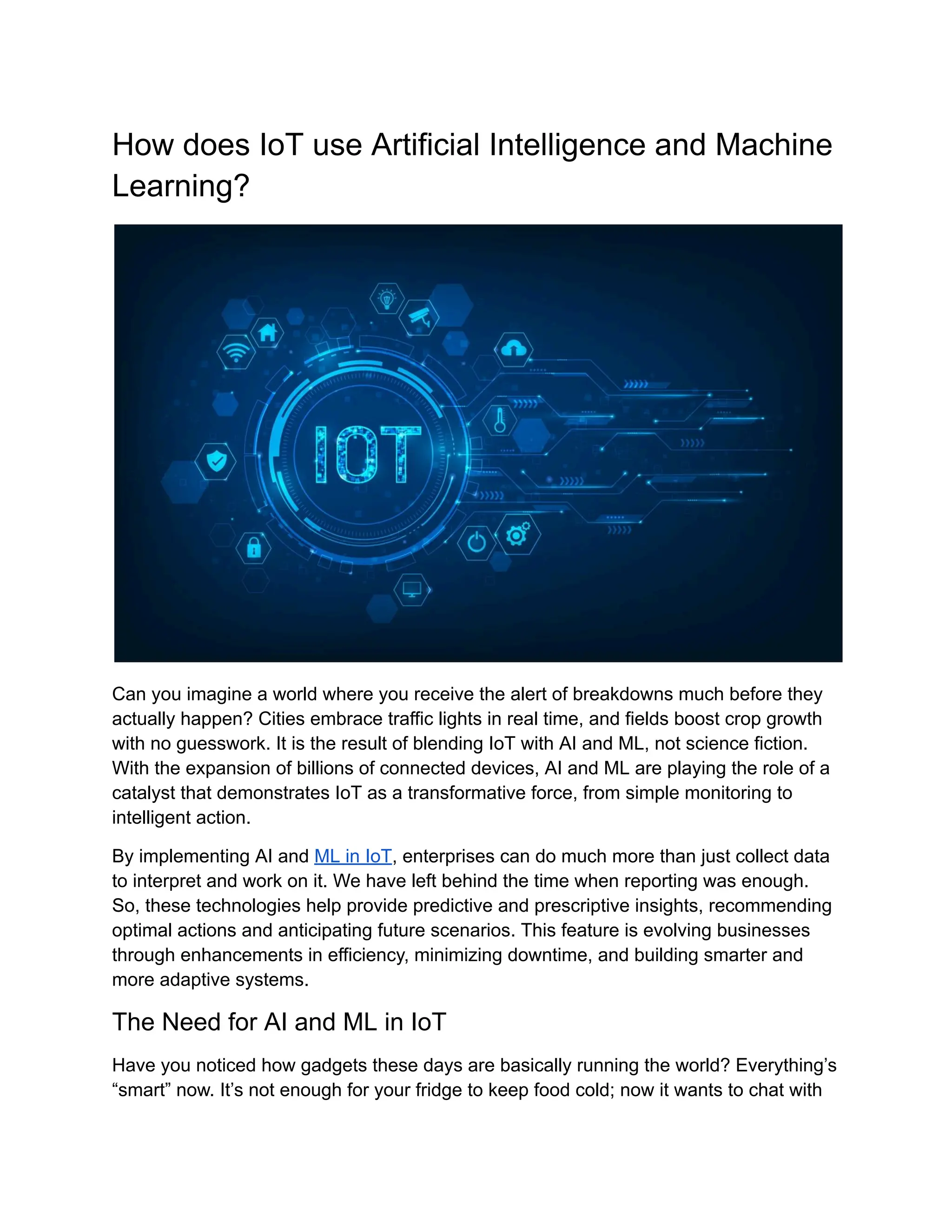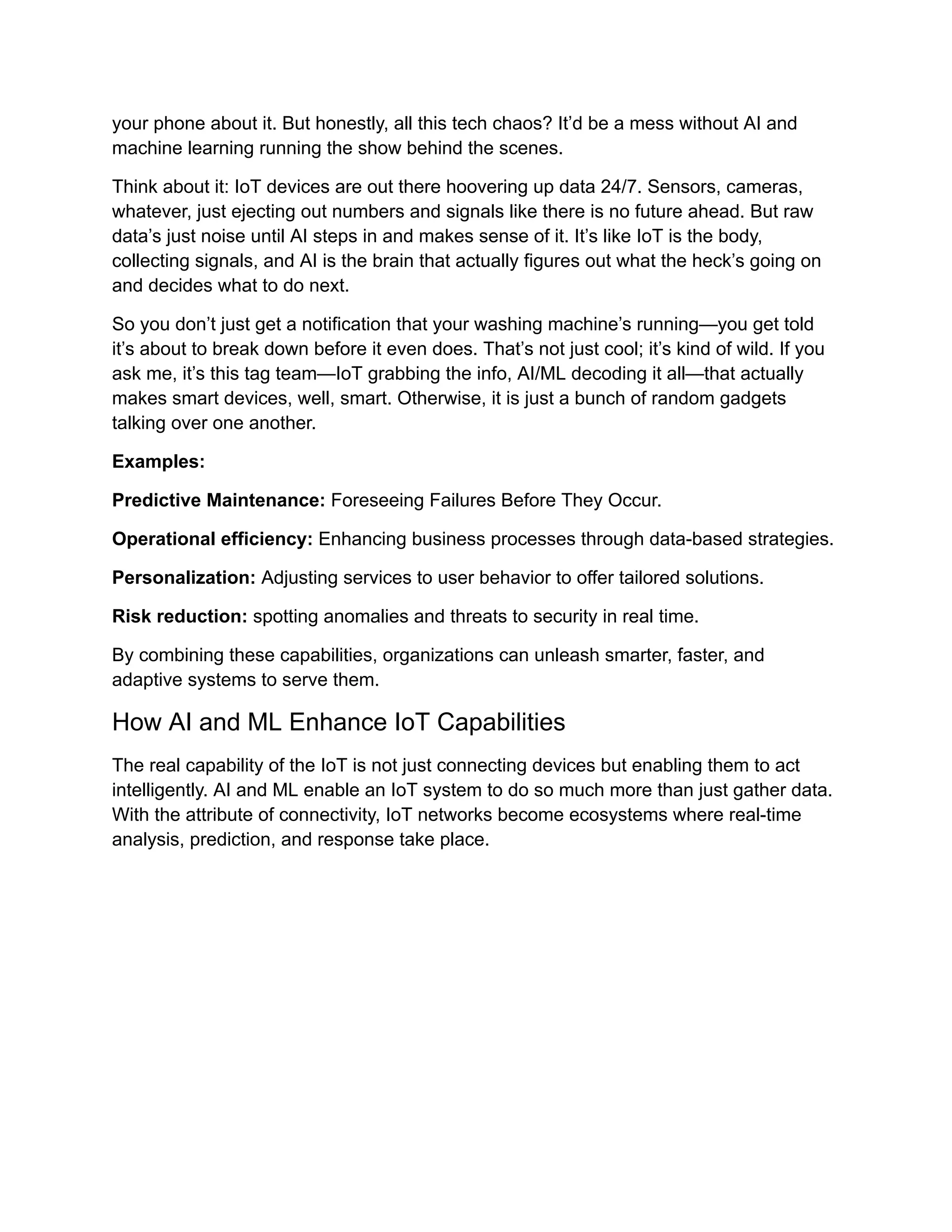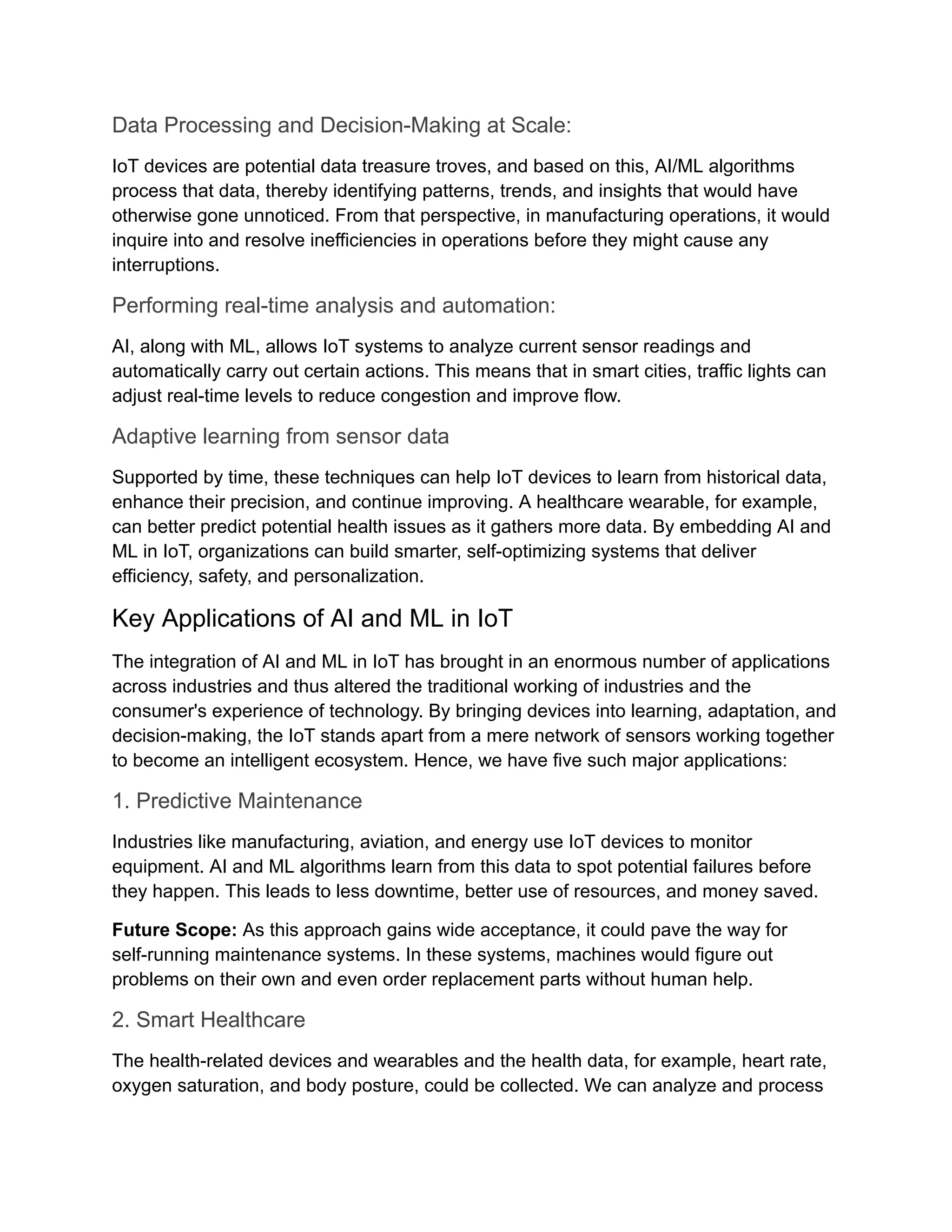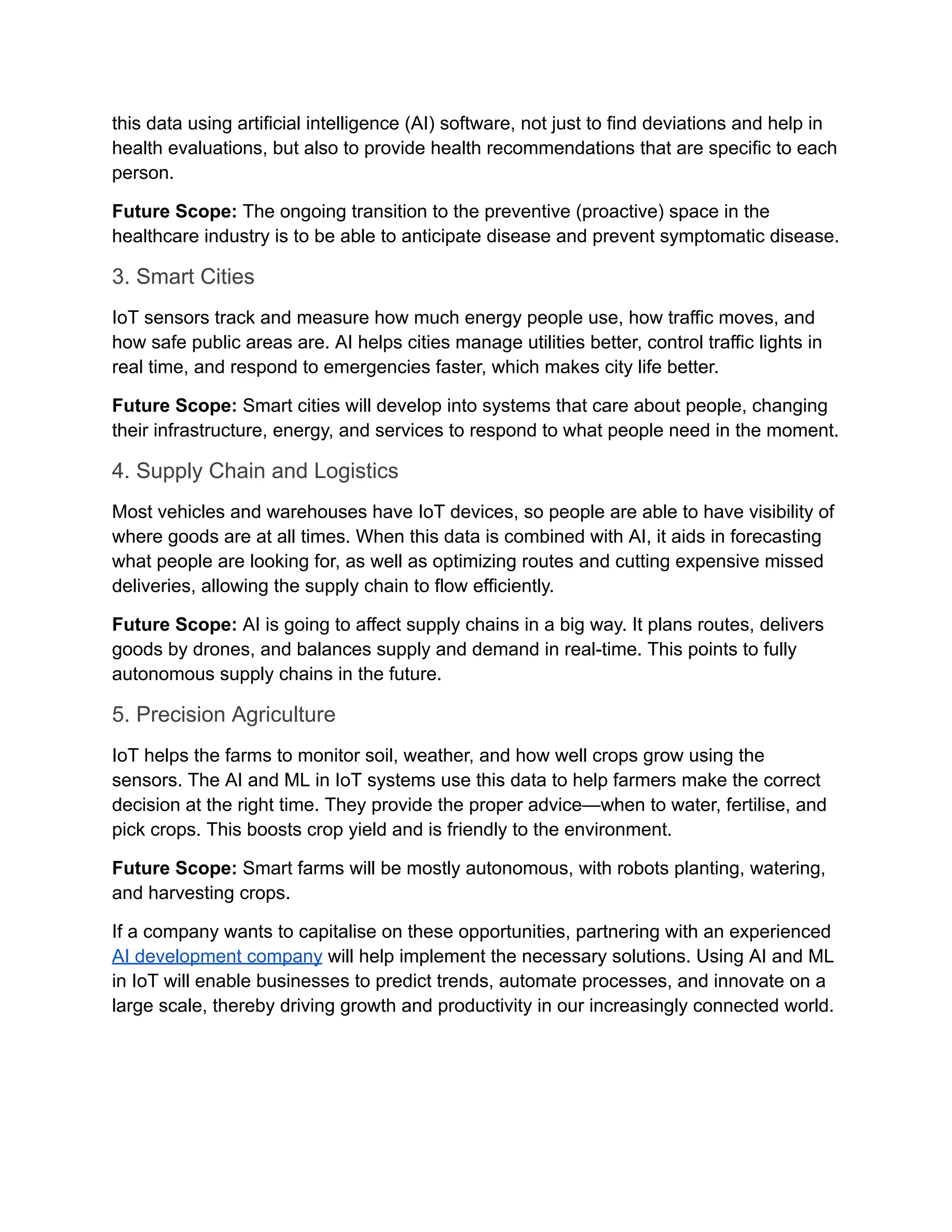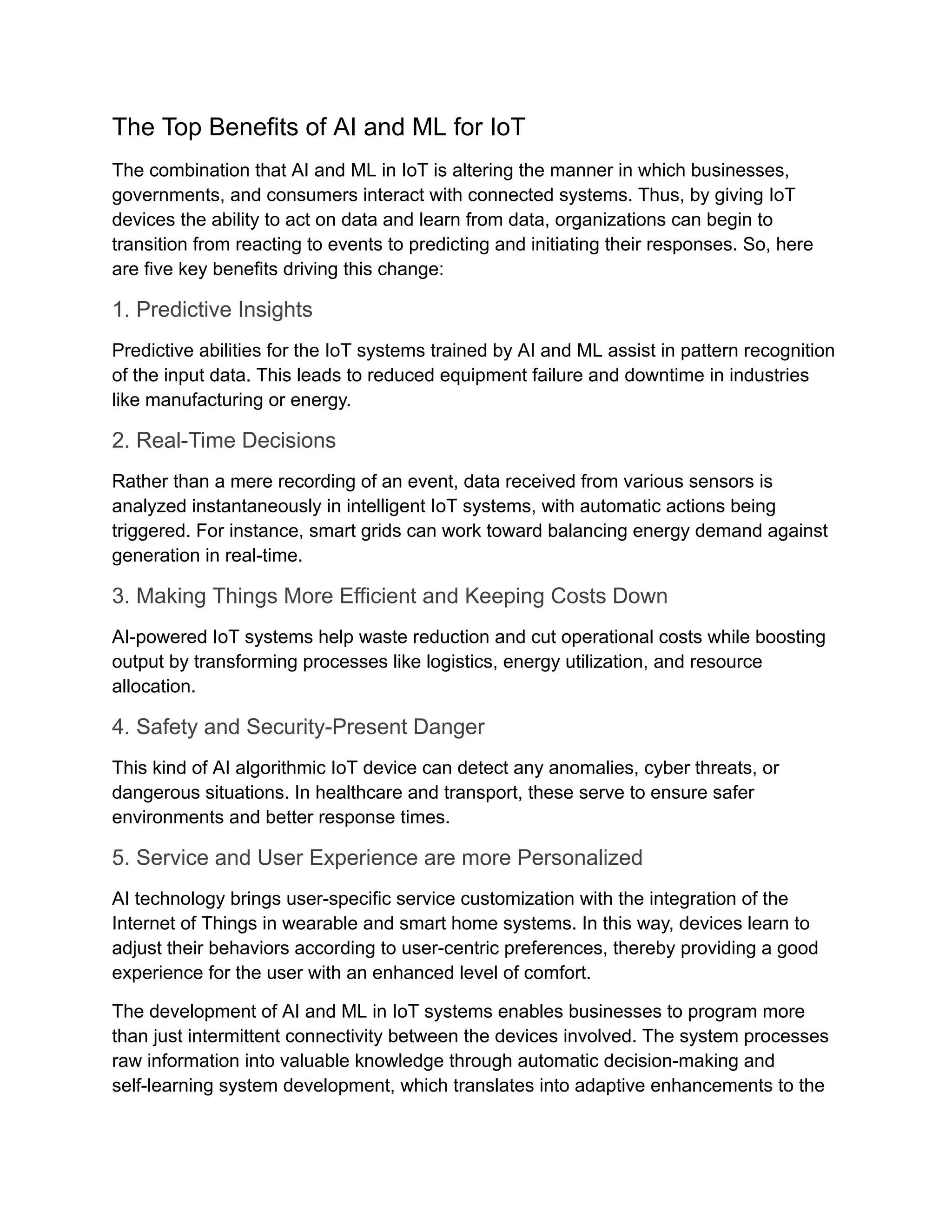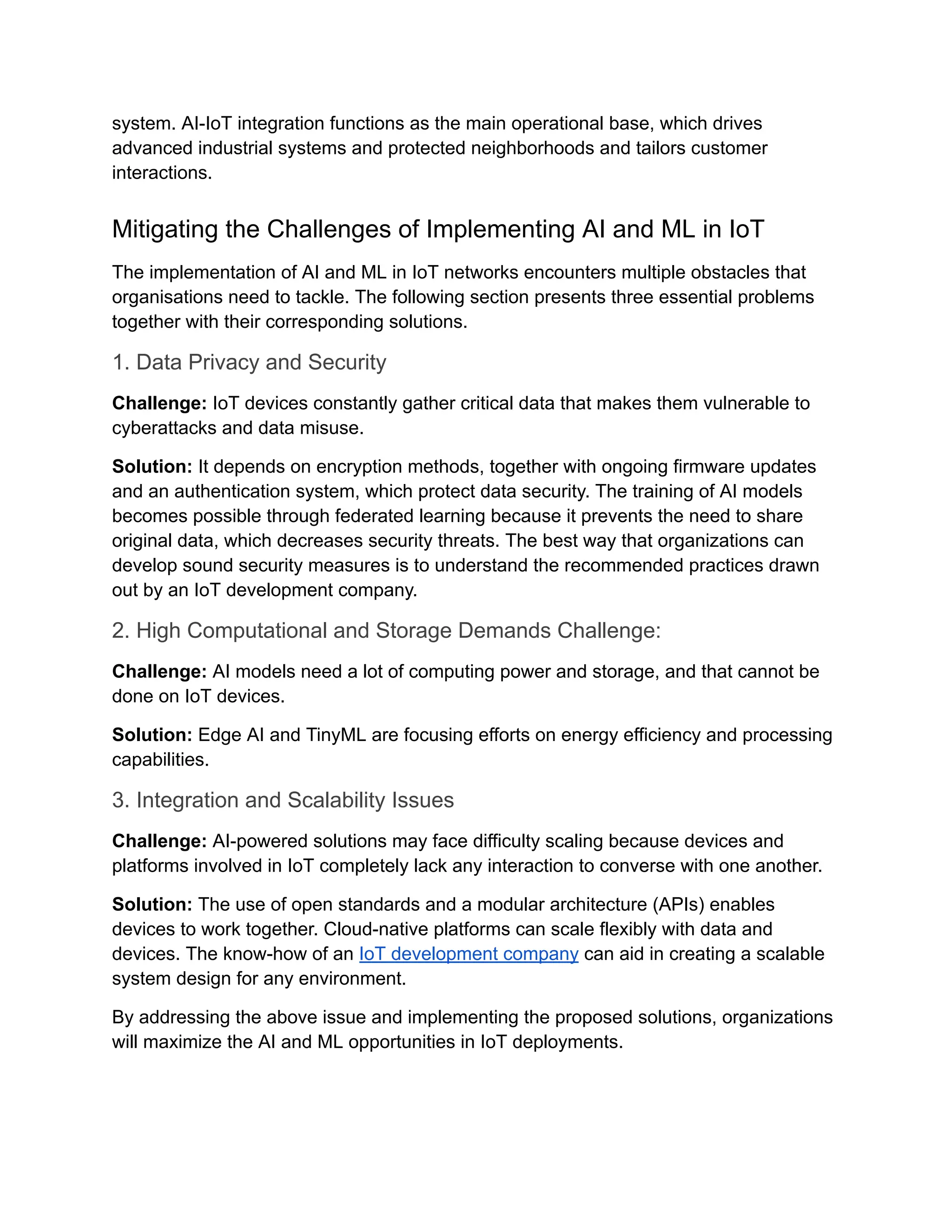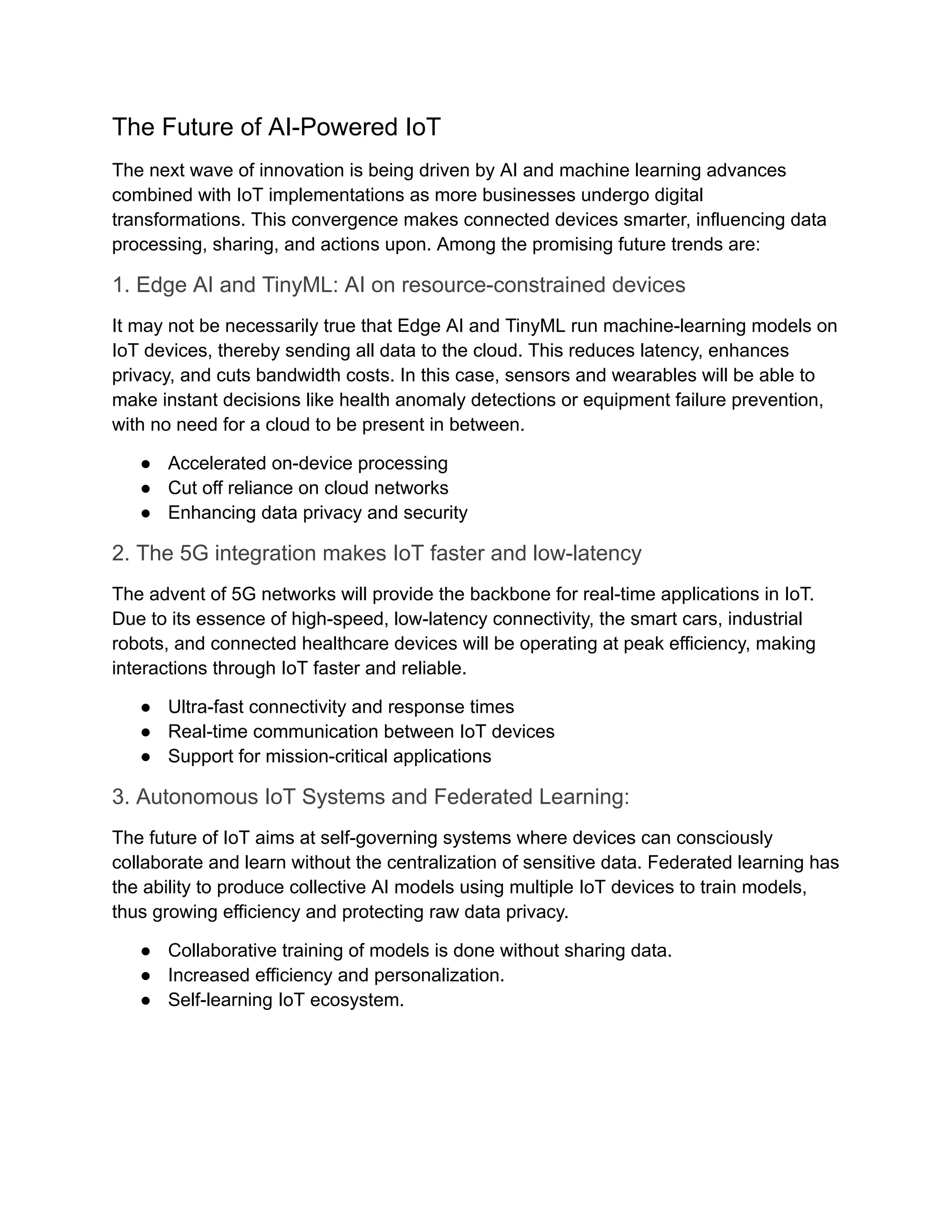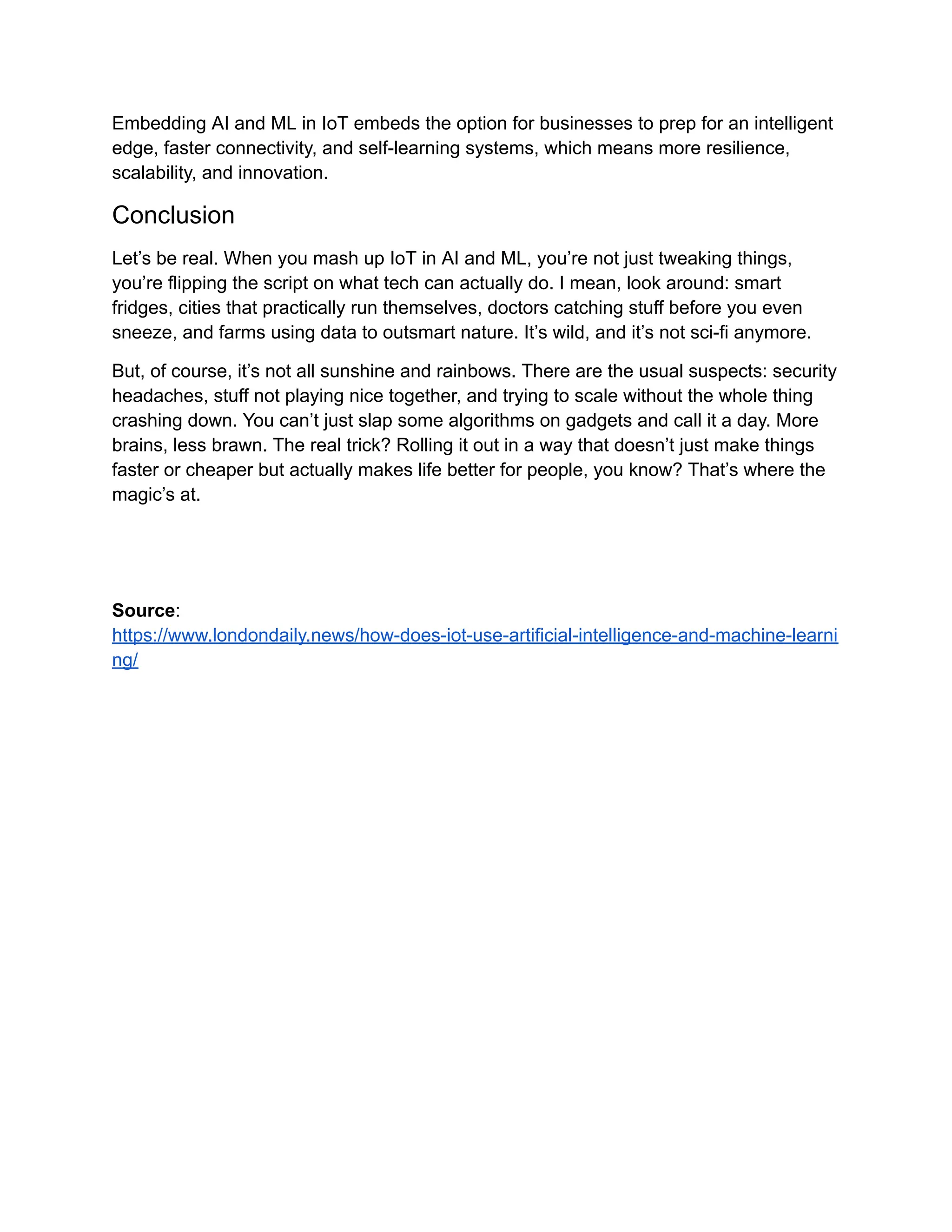Discover how IoT leverages artificial intelligence (AI) and machine learning (ML) to create smarter, more connected ecosystems. AI enhances IoT by enabling real-time data processing, predictive analytics, and automated decision-making. Machine learning algorithms help IoT devices learn from data, detect patterns, and improve performance without human intervention. From smart homes and wearable tech to manufacturing and logistics, the combination of IoT, AI, and ML is transforming industries with intelligent automation and efficiency. Explore how these technologies work together to deliver actionable insights, optimize operations, and shape the future of connected experiences.
